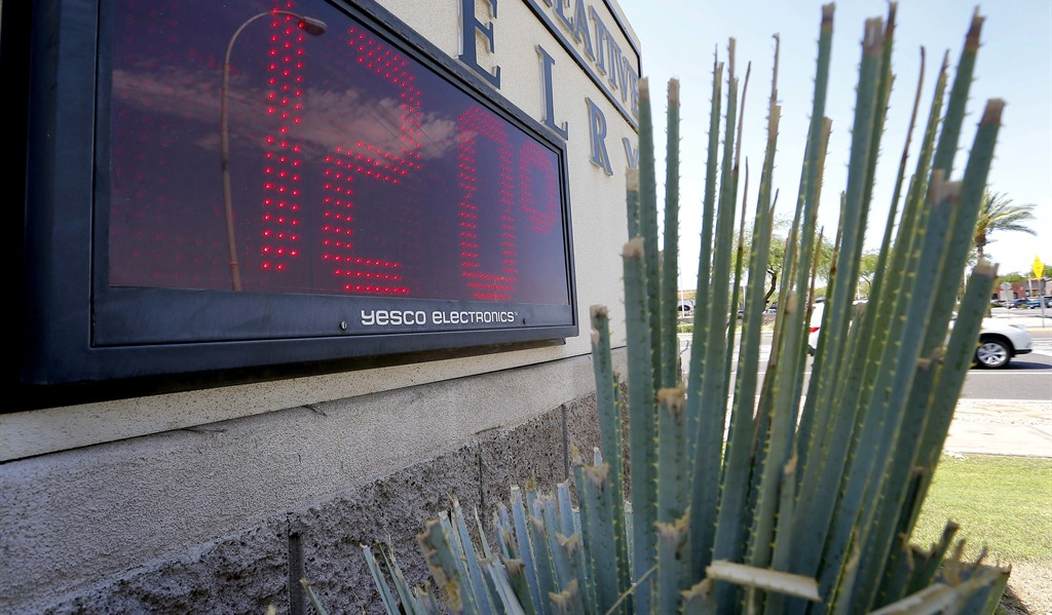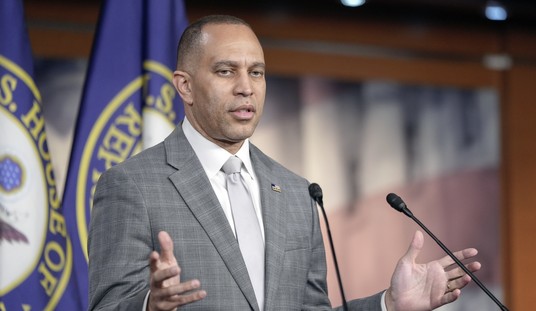Death Valley, California, is known as “the hottest place on earth.” But, if you hear the news that the “Hottest Place on Earth Has Record-Breaking Hot June”—when “temperatures exceeded average June temperatures by about 6 °F”—it might be easy to ascribe the heat to alarmist claims of climate change. While Southern California was experiencing power outages due to a heat wave, Death Valley hit 126 °F—though the previous June high was 129 °F on June 30, 2013, and Death Valley holds the highest officially recorded temperature on the planet: 134 °F on July 10, 1913.
Advertisement
Yes, it is a hot summer for most of the U.S.—but that was predicted by WeatherBELL’s Joe Bastardi who, on Ground Hog Day, referenced El Niño and said: “we may have the hottest summer since 2012.” Dr. Roy Spencer, Principal Research Scientist at the University of Alabama in Huntsville, explains: “it is usually the second calendar year of an El Niño event that is the warmest.” The current El Niño event made 2015 “the 3rd warmest year in the satellite record”—records, which have been kept for 38 years (all three of the hottest years were during an El Niño event). The 2015-16 El Niño is one of the strongest on record.
El Niño is a natural weather pattern first discovered centuries ago by Peruvian fisherman who noticed that the ocean would often warm late in the year. They called the phenomenon El Niño, after the Christ Child. “Modern researchers,” according to Bloomberg, “came to realize its importance to global weather in the 1960s, when they recognized the link between warm surface water and corresponding atmospheric changes.”
El Niño usually means warmer or milder winters and cooler summers in the U.S.—which has been bad for producers of America’s natural gas, as less has been needed for heating and air conditioning. Describing the winter of 2015-16, one account said: “warm, wet or even ‘what winter?’” This past winter’s milder temperatures coincided with abundant output from shale formations, that continued to grow through last winter, and, as reported by Natural Gas Intelligence (NGI): “collapsed natural gas prices to the lowest levels since 1999.” As a result, wholesale electricity prices also tumbled.
Recommended
Advertisement
The trend away from coal for power generation has previously helped natural gas producers, as the increased production easily met strengthening demand. However, that demand has slowed as, according to NGI: “most U.S. regions that could switch out of coal on economic terms have already done so.”
While the warmer winter and oversupply condition coincided to drive natural gas prices to their lowest levels in almost 17 years, weather and supply are now driving them back up.
El Niño patterns are usually followed by what is called La Niña—which happens as the ocean temperatures cool. La Niña generally takes place three months, or as much as twelve months, after an El Niño cycle. A report from CNBC, back in January, projected that this year’s El Niño would “fade by May-July”—which is what we are seeing and that is causing the hotter, drier summer. The Browning World Climate Bulletin says: “The factors that cooled so much of North America in April and May are retreating and the hot marine air masses will surge inland.” Likewise, NGI States: “The El Niño event that led to record North American winter temperatures has made way for the transition to La Niña, which usually results in hotter-than-normal summer temperatures.”
Addressing these weather patterns, Bloomberg cites Kevin Trenberth, distinguished senior scientist at the National Center for Atmospheric Research in Boulder, Colorado, as saying: “The cycles occur every two or three years on average and help regulate the temperature of the Earth, as the equatorial Pacific absorbs the heat of the sun during the El Niño and then releases it into the atmosphere. That can create a La Niña: a ‘recharge state’ when ‘the whole Earth is cooler than it was before this started.’”
Advertisement
While experts differ on the exact timing, most expect La Niña to form as early as July or as late as December—or even January. Trenberth explains: “La Niña is more like a strong case of ‘normal.’ If a region is typically dry, it could become arid in a La Niña. If it’s usually wet, there may be floods.” Which translates to a colder, and more volatile, than average winter—though predictions are for drier and warmer in the southwest U.S. Reports indicate that a strong La Niña could push more polar vortexes down into the U.S. and typically a strong El Niño, as we’ve just experienced, is followed by a strong La Niña.
On June 29, the Financial Times announced: “US natural gas prices have leapt 30 per cent this month as hot weather boost demand for air-conditioning and slowing supplies point to a gradually tightening market.” It adds: “After years with prices in the doldrums, US gas output has also begun to level off.”
The hot summer, according to Bastardi, will continue with widespread warmth through the fall—with the Northeast and Midwest possibly hitting 90 °F into October. Then, going from one extreme to the other, when winter hits, it is expected to be, as previously addressed, colder-than-normal across the Northwest, Upper Midwest, and Northeast.
These conditions create higher cooling and heating demand for natural gas. And that, coinciding with reduced supply, will give a boost to U.S. natural gas prices—rebalancing the market and bringing price recovery.
Advertisement
For investors, Bloomberg states: “Seeing as North American Winters are expecting to be stronger with La Niña, SocGen [Societe Generale Corporate & Investment Banking] recommends investing in natural gas.” The Price Group’s Phil Flynn, seen daily on the Fox Business Network, concurs. He told me that in the rush to convert electricity generation to natural gas, we are now in a place, unlike the winter of 2014, where there are not enough coal-fueled power plants to fill the demand gap. The idea was that with global warming, winters would remain mild, but with the naturally occurring La Niña cycle, and the projected cold winter, we are facing high demand at a time when natural gas production is “getting ready to fall off a cliff.” With reduced supply and pipeline constraints, natural gas may not be able to meet all of the demand. He is encouraging his clients into natural gas.
For consumers this may mean that, because wholesale electricity prices strongly correlate to natural gas prices, power supply costs could be impacted—resulting in higher utility bills. Because of low natural gas prices, homeowners have not felt the full hit of higher cost renewables—but that could be changing as we head into a La Niña winter.

























Join the conversation as a VIP Member